Palm trees, members of the Arecaceae family1, are a hallmark of tropical and subtropical environments. These trees, which exhibit a self-cleaning mechanism, come in various sizes and shapes, but they all share similar physical features, including their palm leaves, also known as palm fronds.
A palm frond is simply the leaf of a palm tree. You can describe palm fronds as foliage that emerges from the top of a palm tree. These fronds can come in diverse shapes, ranging from large feather fronds to expansive fans, and they give palm trees their iconic lush and tropical appearance.
Palm fronds usually stay green year-round, but when they age or undergo stress, they may turn brown. Some can last for up to five years or longer. These fronds perform photosynthesis, which is vital in providing nourishment for the tree’s survival. They also play a crucial role in regulating the tree’s inner temperature.
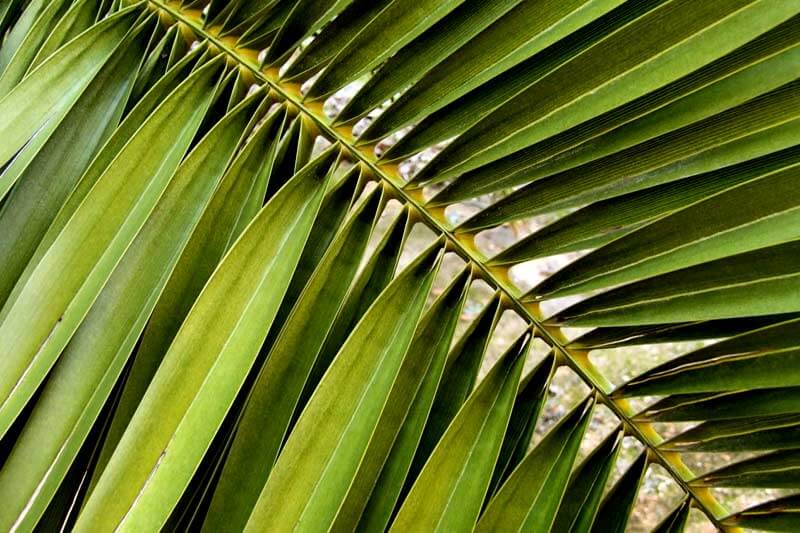
Parts of a palm frond
The palm frond can be divided into various parts as follows:
- Petiole (leaf stalk): The leaf stalk is what connects the palm fronds to the main stem (tree trunk).
- Rachis: The rachis is part of the petiole that bears leaves at short intervals. It extends from the end of the petiole up to the tip of the fronds.
- Palm leaflets: Leaflets are parts of the fronds that attach to the rachis. They are V-shaped in cross-section. The apex of the V has a midvein. Palm fronds with inverted V-shaped leaflets are known as reduplicate while those with upright V-shaped leaflets are referred to as induplicate.
- Frond midrib (leaf sheath): This is the base of the palm frond (end of the leaf stalk), where the fronds attach to the main stem.
- Cabbage: This is the folded-up palm tree fronds. In some smaller palm species, cabbage is an edible part.
- Palm spines: These are prickles or thorns along the petiole.
Types of palm fronds
There are four basic characteristic forms of palm leaves: pinnate, palmate, bipinnate, and entire. The most common are Pinnate and Palmate, but the two others also appear in the palm family, although rarely.
Pinnate leaves
They are often known as “feather palms”, and are the most common in the palm family. Pinnate fronds are divided into leaflets and are attached to a single leaf axis, similar to a feather. Pinnate fronds vary widely in size. They can be as small as 1 foot and as long as 75 feet.
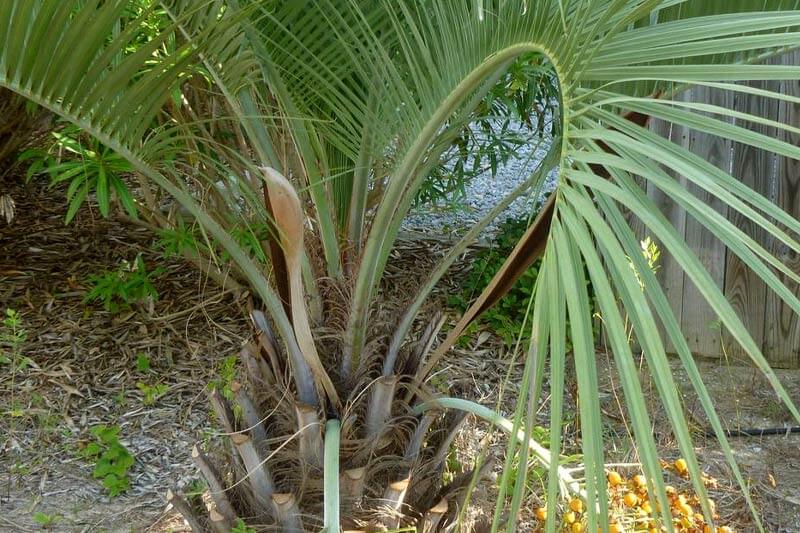
Palmate leaves
They belong to the trees commonly known as fan palms, characterized by their fan fronds. Palmate fronds have extended leaf parts that are circular or semicircular.
The leaf parts are divided into segments and radiate from where they are attached to the petiole (the stalk that attaches the leaf to the stem). In terms of size palmate leaves vary in size. It can be as small as the size of your palm and as large as 5 meters in width.
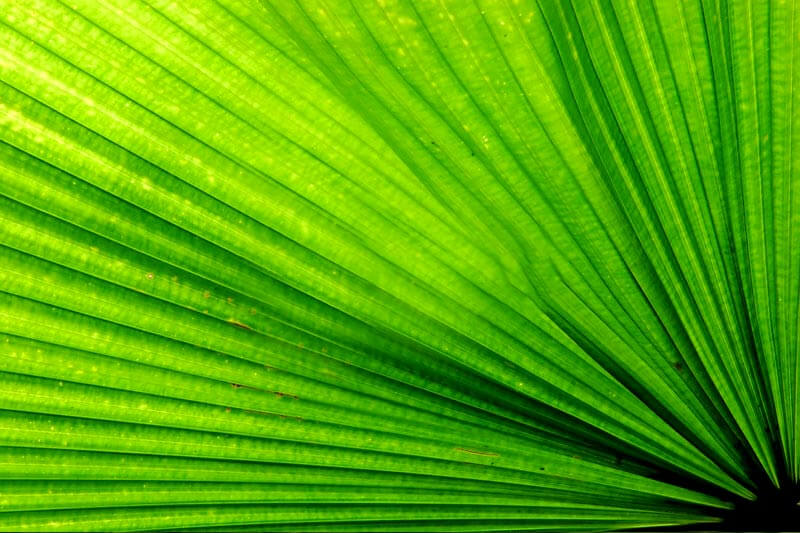
Bipinnate leaves
This is a class of rare palm frond types. The leaf structure is similar to that of the feather palm, but in this case, they are divided in two. The leaves resemble a fishtail, and each of the fronds can be as long as 4 meters and as wide as 3 meters.
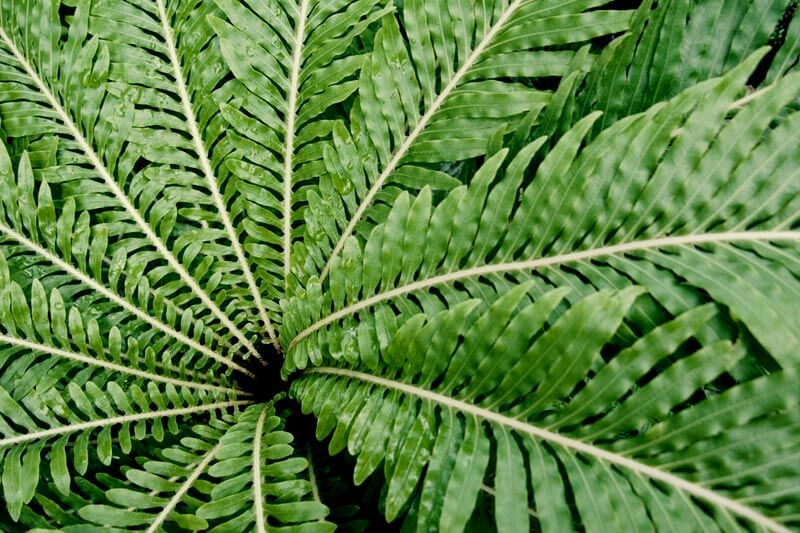
Entire leaves
This is another rare class of entire fronds in the palm family. They have a basic leaf structure that is similar to pinnate leaves, although simple and undivided, and this makes them unique.
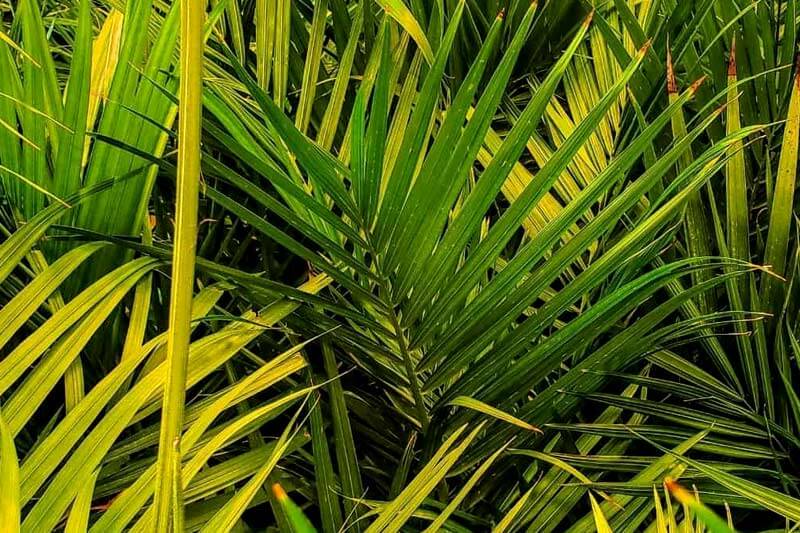
How to Care for Palm Trees and Fronds
Proper care for palm trees involves specific watering, fertilizing, and positioning according to the palm species’ natural habitat requirements. Consistency is key, and it is important that you pay proper attention to soil quality and exposure to light.
Overwatering and improper fertilization can lead to poor health and disease, so it’s crucial to understand and meet the distinct needs of your palm to ensure it thrives.
Pruning Palm Trees and Fronds
Pruning is an essential aspect of palm tree maintenance that should only be carried out when fronds turn completely brown to avoid depriving the tree of necessary nutrients.
The process requires clean, sharp tools for precise cuts, avoiding damage to the trunk, and should only be done as necessary to maintain plant health and aesthetics. For taller palm species, professional arborists should be consulted to ensure safety and proper care.
What can palm fronds be used for?
Palm fronds find a second life in a variety of practical applications once they fall from the tree. They are used in thatching for roofs and mulching for gardens due to their slow decomposition rate.
Furthermore, palm fronds2 can be utilized to create garden fencing and windbreaks, crafted into various handmade items, employed as natural stakes in gardens, and even served as a source of biofuel. In cultural contexts, they also hold symbolic significance, often representing peace and victory in religious traditions.
- Botanico Hub, (2019) Palm Family (Arecaceae). <https://www.botanicohub.com/plant-families/arecaceae> Accessed: 26-02-2024
- Jonathon Engels, (2016) 10 Ways to Use Palm Fronds. <https://www.permaculturenews.org/2016/04/12/10-ways-to-use-palm-fronds-in-the-home-and-garden/#google_vignette> Accessed: 26-02-2024



